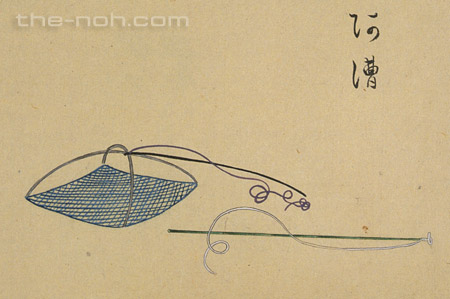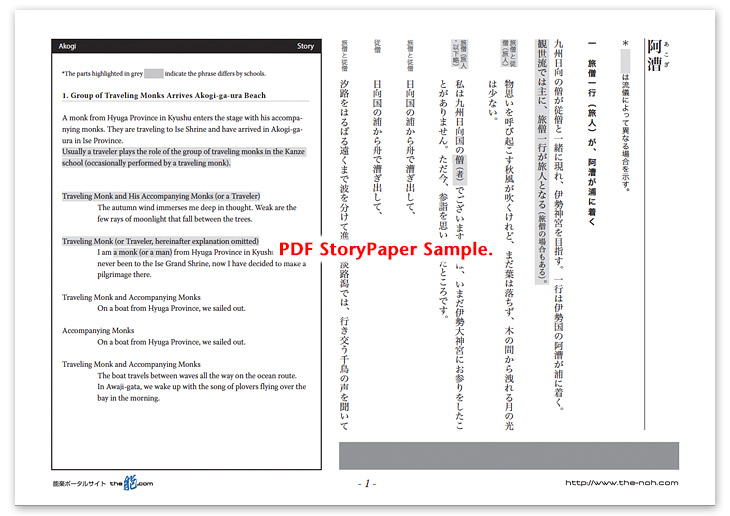
 Akogi
Akogi

![]()
A monk and his accompanying monks (or merely a man) from Hyuga Province in Kyushu (present-day Miyazaki Prefecture) depart on a pilgrimage to pray at Ise Shrine. On their way, they arrive in Akogi-ga-ura (the beach near Akogi-cho, in Tsu City, Mie Prefecture in present-day Japan). The group encounters an old fisherman on the beach and discusses with him an old poem describing Akogi-ga-ura Beach. When the traveling monk (or merely the traveler) asks why the beach is called Akogi-ga-ura, the old man tells the story of a fisherman named Akogi who was discovered fishing in the sanctuary where fishing is prohibited, and was executed by drowning off the shore of this beach. He encourages the monk to console the spirit of Akogi, who is still suffering in the hells due to the serious crime he committed. Having finished the story, the old fisherman implicates that he is the ghost of Akogi, and disappears with a sudden gust of wind in waves in the ocean.
After again hearing the story of Akogi’s final moments from a villager, the traveling monk (or the traveler) performs a memorial ceremony for Akogi. Then the spirit of Akogi appears and shows the scene of how he fished in the banned area. He further shows his misery of being tortured in the hells. He then sinks under the waves while shouting “Save me, traveler!”
![]()
This Noh play is composed of calm, yet extremely frightening scenes that describe the tragic death of a fisherman who broke a fishing ban. His suffering after death, due to karmic retribution, is described in finely honed expressions of chanting and music that dramatically change the pace, as well as in the well-controlled movements of performers.
Akogi-ga-ura Beach used to be a sanctuary reserved exclusively for fishing by Ise Shrine, and therefore the public was prohibited from fishing there. But one fisherman secretly caught fish there under the cover of night. He poached repeatedly, and eventually his misdeeds were discovered. He was caught and executed. It is thought that this ancient legend was first spread among the people. The legend became the source of a poem, which in turn became the basis of this Noh play. The poem is introduced in this dramatic piece.
The first half of the drama, with the conversation between the monk and the old fisherman, proceeds calmly. However, the scene changes suddenly before the intermission. In the second half, the ghost of the fisherman reveals his terrifying state of helplessness in the hells. Finally, this drama ends with the ghost disappearing in the ocean while crying out for help—a note of hopelessness that will leave a chilling, gruesome impression etched deeply into the viewer’s mind.
Waki is a traveling monk in this play; however, in Kanze school, he is usually not a monk but merely a traveler.
Incidentally, there is also a word, “akogi (unscrupulous),” in Japanese. It used to mean “the deed will reveal itself if done repeatedly,” based on the legend and poem introduced in this piece. This concept is explained in this drama. In later days, the word also took on such meanings as merciless, inhuman, and cruel; impudent and importunate; and sordid, greedy money-making. Such are the meanings of the word in modern usage.
STORY PAPER : Akogi
Story Paper presents noh chant stories in modern speech, with story outlines, highlights and more using Adobe PDF format, which can print out and zoom in. Print out the pages and take them with you when you see the actual noh performance.

The copyright of Story Paper is held by the Noh.com. Story Paper is for individual use only. It is prohibited by the copyright law to distribute or publish printed-out Story Paper pages without prior consent. For more information, check the credit and disclaimer pages.



 [Akogi : Story Paper PDF : 455KB
[Akogi : Story Paper PDF : 455KB